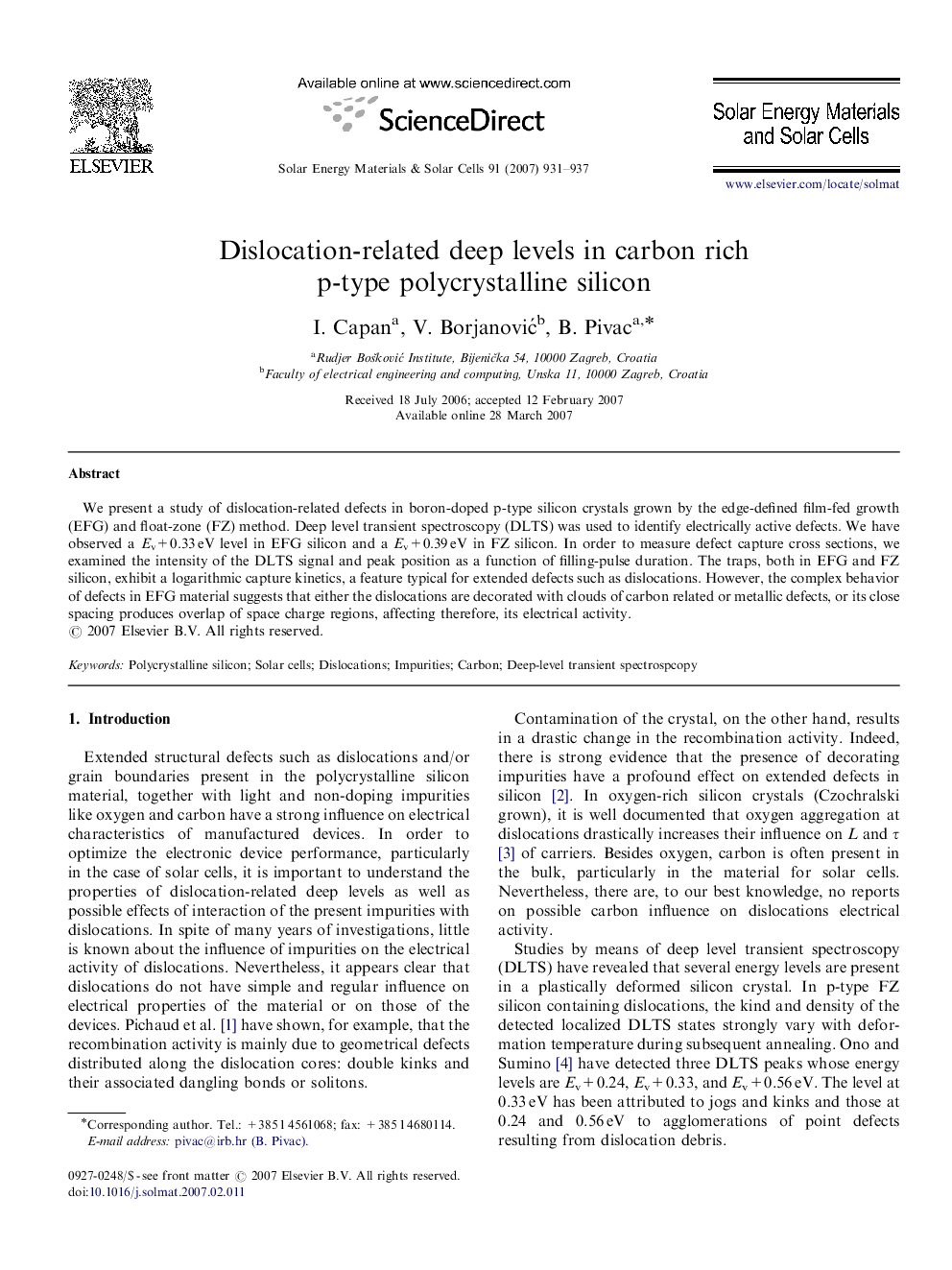| Article ID | Journal | Published Year | Pages | File Type |
|---|---|---|---|---|
| 81138 | Solar Energy Materials and Solar Cells | 2007 | 7 Pages |
We present a study of dislocation-related defects in boron-doped p-type silicon crystals grown by the edge-defined film-fed growth (EFG) and float-zone (FZ) method. Deep level transient spectroscopy (DLTS) was used to identify electrically active defects. We have observed a Ev+0.33 eV level in EFG silicon and a Ev+0.39 eV in FZ silicon. In order to measure defect capture cross sections, we examined the intensity of the DLTS signal and peak position as a function of filling-pulse duration. The traps, both in EFG and FZ silicon, exhibit a logarithmic capture kinetics, a feature typical for extended defects such as dislocations. However, the complex behavior of defects in EFG material suggests that either the dislocations are decorated with clouds of carbon related or metallic defects, or its close spacing produces overlap of space charge regions, affecting therefore, its electrical activity.
